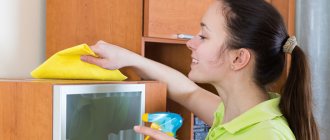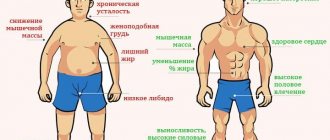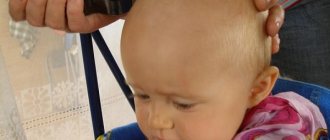There is nothing worse for children than boredom and monotony.
Children are always active, curious, and ready to explore the world around them. And, of course, parents at home and teachers in kindergarten should provide them with every opportunity for this. All important and correct things are instilled in our kids through a game, into which even an ordinary walk can be turned if you make it a thematic adventure - exciting and educational. Here are 12 interesting scenarios for themed walks with kids.
In the sands of the urban “desert”
Objective: to introduce kids to the properties of sand.
During this thematic walk, we establish the looseness and flowability of sand, study it in dry and wet form, remember where sand comes from (note: small particles of crumbled rocks, mountains), and how it allows water to pass through. If possible, you can study different types of sand - river and sea.
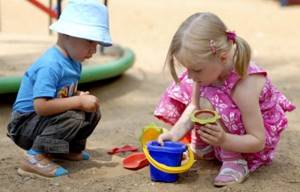
To make the lecture interesting, we conduct experiments together with the child, and also learn to draw in the sand, build castles, and leave footprints.
We take molds and a bottle of water with us (unless, of course, you live by the sea, where there is no shortage of sand and water).
Fertilizing
In autumn, phosphorus and potassium fertilizers are applied to garden crops, which provide:
- wood strengthening;
- strengthening the root system;
- accumulation of nutrients;
- increasing frost resistance;
- improving the taste of the future harvest.
Related article:
Yeast fertilizer for tomato seedlings
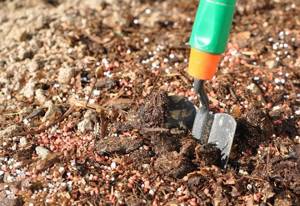
Nitrogen is excluded from fertilizing at this time of year, as it provokes increased shoot growth and inhibits the ripening of wood. This leads to the fact that fragile parts of plants freeze out even in mild frosts.
It is not advisable to carry out foliar fertilizing in the fall, since the foliage is no longer able to absorb it. The only thing that can be done is to spray with a saturated urea solution (600 g per 10 liters of water) to speed up the decomposition of fallen leaves.
Where does snow come from?
Task: study the properties of snow.
Of course, children know what snow is. And your child has probably already sledded and made an “angel” in a snowdrift. But does your little one know what snow is and where it comes from?
We tell the child where snow comes from and how it is formed from a huge number of snowflakes. We study the properties of snow: it is soft, loose, heavy, melts very quickly when exposed to heat and turns into ice at sub-zero temperatures.
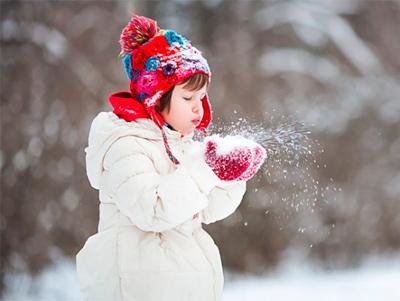
Don't forget to look at the snowflakes that fall on your clothes: you will never find two identical snowflakes.
You can also sculpt from snow (we build a snowman or even a whole snow fortress).
If there is time left, let's play snow darts! We fix a pre-drawn target on a tree and learn to hit it with snowballs.
What can you play with your child outside in winter?
Where and how to walk in the fall with your child?
If a newborn goes on an autumn walk, there is no special question “where and how?” not worth it. The walk takes place along park paths, alleys, and quiet courtyards.
Is your baby already sitting? He will be interested in watching the flying leaves and listening to their rustling. Mom can give the baby a large multi-colored maple leaf. Be careful, because after carefully examining the object, the child will try to put it in his mouth.
How lucky are those one-year-old babies who have a park near their home! This is a whole testing ground for research and entertainment! Moms can organize an interesting holiday:
- Run and catch falling leaves.
- Collect pine cones for home crafts.
- Make an autumn bouquet of leaves.
- Throw a whole bunch of dry autumn leaves and fall into it, bury your head.
You can take a dried fluff and play “Blow”: you need to blow so that the fluff does not fall to the ground (a balloon or soap bubbles will also do). The game not only captivates children, but also trains the lungs and promotes health.
Does your baby love to play in the sandbox? In autumn, playing with sand is possible in warm and dry weather. The sandbox must be equipped with a bench; children should not sit on wet sand. But you can pour grains of sand and pebbles not only with a spatula, but also with your hands. The main thing is that the mother needs to make sure that the baby’s hands are warm. Ideally, dig and pour it yourself. Stock up on wet wipes, spare mittens and patience.
Don't discount the opportunity to walk in the rain. Put rubber boots on your feet and go conquer the puddles. Don’t be left behind either, believe me, it’s simply amazing to stomp on the water and watch fountains of splashes fly around!
We teach kids to work
Task: instilling respect for other people’s work, developing in the child a natural desire to come to the rescue.
Before the walk, we study with the baby in pictures and instructive children's films how important it is to work. We consider possible options for working on the street, explain how hard each work is and why it is important.
While walking, we study workers using specific examples - caring for plants (for example, at a grandmother’s dacha), watering vegetables, feeding birds and animals, cleaning the area, painting benches, removing snow, etc.
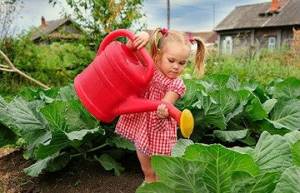
We study tools/equipment that are used in different professions.
We invite the child to choose the job that he would like today. We hand over a brush (rake, spatula, watering can) - and get to work! We make sure to have fun breaks with tea - all in an adult way! You can also knit your own small broom from twigs - this will be useful for developing fine motor skills and broadening your horizons.
After the walk, we draw the most vivid memories of our first working activity.
Games from childhood
To organize leisure time on the street with an older child, remember and show games from your own childhood: tag, hopscotch, ball games, rounders , and in windy weather, fly a kite or blow soap bubbles .
Surely every adult in childhood drew with chalk on the asphalt. So why not remember such a fascinating process that will direct the child to the development of creative abilities.
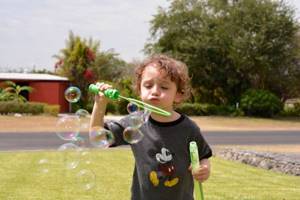
In early spring, when the streams are flowing with all their might, it will be useful to remember paper boats and involve your child in this entertainment. Surprisingly, most people still look at such a spectacle in fascination and indulge in their own memories.
It will also be useful for parents to warm up and take part in a joint game with their children. Remind your children about a scooter, badminton and a jump rope - these useful things will help splash out excess energy in the right direction and have fun.
Cockroach bugs
Objective: expanding knowledge about insects.
Of course, the ideal “experimental subjects” are ants, the study of which is not only educational, but also fascinating. It is advisable to find a larger anthill in the forest so that the life of tiny workaholics is more visible to the child. We introduce the child to the way of life of insects, talk about how exactly they build their anthill house, who is in charge, how they like to work, and what benefits they bring to nature.
We make sure to connect our “lecture” with the general rules of behavior in the forest - forming the correct attitude in general towards nature and the living creatures that live in it.
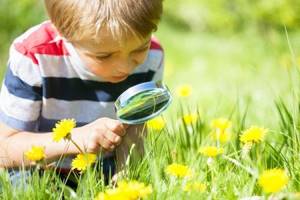
Of course, we have a picnic in the forest! Where would we be without him? But no fires or barbecues. We take a thermos of tea, sandwiches and other culinary delights with us from home - and enjoy them accompanied by the singing of birds and the rustling of leaves. We make sure to clean up all the trash after the picnic, accompanying the cleaning with an interesting lecture on the topic of how destructive trash left in the forest is for plants and animals.
Don’t forget to leave a special sign on the anthill (let the child draw it, take the sign with you from home) - “Don’t ruin the anthills!”
At home, you can watch a movie or cartoon about ants and cap your walk with a plasticine sculpture of an ant.
Winter has come
On this walk we study the general features of the winter period: how the sky changes color in winter, how trees shed their “clothes” and plants fall asleep, how animals and birds hide in burrows and nests.
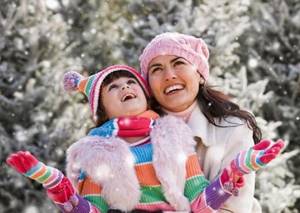
We focus on the fact that the sun does not rise too high in winter and provides almost no warmth. We consider the questions - where does the wind come from, why do trees sway, what is a blizzard and snowfall, why you can’t walk in a strong blizzard and why there is a thicker layer of snow near the trees.
Of course, we reinforce the story with competitions, snow games and (at home, after hot tea with buns) winter landscapes.
How to dress a child for a walk in winter so that he does not get sick?
Studying trees
This walk is more interesting in summer, although it can be repeated in winter to demonstrate which trees are losing their leaves. However, it will also be good in the spring, when the trees are just waking up and buds appear on the branches. But it is in the summer that there is an opportunity to compare different types of leaves with their color, shape and veins.
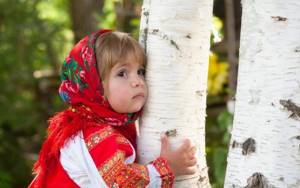
You can take an album or book with you so that you have somewhere to put leaves for the herbarium. We study deciduous and coniferous trees, their flowers and fruits, crowns.
If the weather permits, you can sketch each tree in an album (take a small folding stool with you for your child) - suddenly you have a future artist growing up.
Don’t forget to tell us where trees come from, how to calculate their age by the rings on a stump, why it is important to take care of trees, why the bark is whitened, and what people make from wood.
Harvest
Before performing the entire complex of work, the crop is first harvested. In this case, nothing should remain either on the branches or under them. Fruits and berries that are not harvested for the winter (especially carrion) can become a source of pest larvae and infectious agents. Specimens unsuitable for consumption can be used for different purposes depending on their condition - recycled, added to compost, or disposed of.

The harvest must be harvested on time - in accordance with the characteristics of the crop and variety, as well as taking into account the climatic conditions in the region. As a rule, all fruits and berries must be harvested in September, in some cases no later than the first ten days of October. By remaining on the branches longer than expected, they lose their quality and prevent the plant from fully preparing for winter.
Whose traces?
A great option for a themed walk for kids. It can be carried out both in winter (on snow) and in summer (on sand).
The mother’s task is to teach the child to distinguish the tracks of birds and animals (naturally, we draw the tracks ourselves), and also to study who can leave tracks, how animal tracks differ from bird and human tracks, who can confuse their tracks, etc.
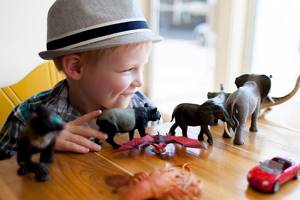
Don't forget about fun riddles, playing "dinosaur tracks", walking on a string stretched right on the sand, drawing footprints of a house from memory.
Winter plantings
Tree seedlings are only purchased in the fall, since at this time there is the widest selection in nurseries. Until spring, they are buried, placing them at an angle with the crown facing south, in a place protected from cold winds and direct sunlight.
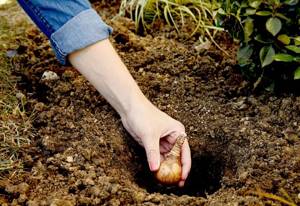
Before winter, berry bushes and strawberries are planted. Flowers include early-flowering bulbous and cold-resistant annuals, the seeds of which are sown directly into frozen furrows. This will reduce the amount of planting work in the spring.
Wild and domestic animals and birds
The purpose of this walk is to introduce kids to the world of urban, domestic or rural fauna.
We study how wild animals differ from domestic animals, what baby animals are called, what body parts birds and animals have, why domestic animals depend on people, and why wild animals are called wild.
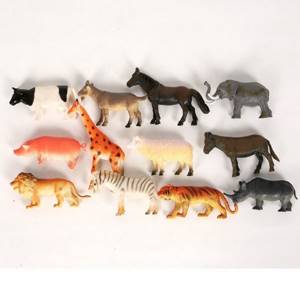
As we walk, we come up with nicknames for all the dogs and cats we meet, study breeds, and crumble bread for the birds.
At home, we give a lecture “on the topic” in advance and make a feeder that the child can hang during a walk “for the most voracious birds.”
Whitewashing, protection from rodents
In winter, tree trunks are whitened using garden paint with a high-quality adhesive base and fungicidal additives. The event has 2 goals:
- destruction of pests and pathogenic microorganisms hidden in the bark;
- protection from sun rays that cause burns.
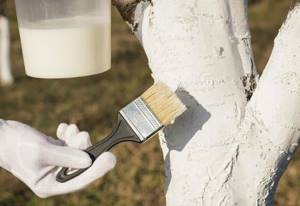
To prevent damage to the bark by rodents, trunks and skeletal branches are wrapped with non-woven material.
Related article:
Zodiac signs that will be especially lucky in finances in 2020
Olympic Games
It is better to organize this hiking trip with 2-3 families, so that there is an opportunity to arrange a competition for the children.
We teach children to use sports equipment (we take with us balls, jump ropes, hoops, ribbons, badminton, skittles, etc.), we study different sports and the most famous athletes. We instill in children a spirit of competition, in which a loss is not perceived as a defeat, but as a reason to be more active and move on.
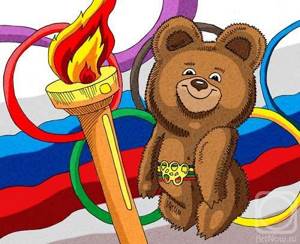
Think over the competition program for each sport in advance and purchase medals with certificates and prizes.
Prepared sports riddles, a large children's crossword puzzle on the topic of walking, and colored crayons with which the whole team will draw their Olympic symbol will also not hurt.
Visiting summer
Another walk-hike (in the forest, in the meadows, in the field), the purpose of which is to introduce the child to plants.
We introduce the child to flowers, study the parts of a flower, their meaning in nature, and medicinal plants. As we walk, we awaken interest in the world of insects, especially those that participate in the life of plants.
You can take a magnifying glass with you to better see the insects and parts of the flower.
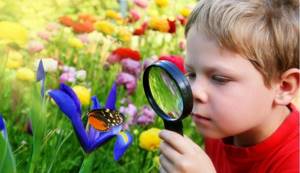
We prepare in advance riddles on the topic of walking and interesting games that can be played in nature. At home, we make sure to consolidate the material - we arrange an exhibition of drawings with images of the studied flowers and insects, we make a herbarium of herbs and an application on the topic.
Don’t forget to bring a butterfly net, binoculars and a camera, and a box for interesting meadow finds.
It is also important to study the meadow rules: you cannot kill insects, pick flowers unless absolutely necessary, litter or touch bird nests in bushes.
What to do with your child on a walk?
Think back to your childhood.
What was interesting to you, what or who could you watch for hours? All this will certainly be interesting for your baby. Remember only two most important rules: Rule #1. Be sincere and stop staring endlessly at the clock, wondering how slowly the hand is crawling. If a child sees that you are really interested in everything that interests him, you will become true friends. Rule #2. Be laconic, sometimes the meaning of what is said is lost behind the flow of words. Name each item and its properties clearly and clearly, without comparisons. For example: Do you want your child to learn to distinguish colors and remember a specific color? Find the desired color in your surroundings and simply pointing at the object, say YELLOW, and do not continue to clarify who or what is painted in this color at the moment, and what else comes in this color. With the flow of information, something important will be lost, namely yellow !
So we went out for a walk. At any time of the year, and especially in summer and spring, take a camera and a collection bag with you. Let's start with sand. Sand is a storehouse of knowledge for a child. You can sort it out, scatter it, sift it. Compare the color of dry and wet sand. Wet sand can be used to sculpt and build, but dry sand crumbles. Pay attention to the soil (earth, sand, clay), digging, loosening. What they have in common and how they differ. Check with touch. At the dacha, conduct an experiment: plant a seed in the soil and in the sand. After a while, check where there are shoots. If you are on the shore of a river or sea, you can give a small child the concept: cold, warm, hot sand. Invite your child to find where the sand is cold (in the shade) or hot (in the sun). Where the sand is dry, wet (in the surf area). Make sure the surface of the sand is smooth and damp and have your child draw something on it with a stick. Try making hand and foot prints in the wet sand. For a collection, you can collect multi-colored sand in a jar (if you travel: sand by a pond, by a river, sea, small, large, etc.) Take photos of the baby on the sand, put some “collection” sand in baby food jars (sign , where the sand was brought from) and at home, showing photographs to all your family and friends, ask your child to choose a jar from his collection of sand.
Now let’s remember about water: tell us about its properties: liquid, flowing, can have different temperatures (it warms up in the sun, cold from the tap). The water is clear, you can see everything in it. On a hot day, the water heats up quickly in the basin. Let's observe how quickly the water splashed on the asphalt dries out. Let's experiment! Which objects sink in water, which float. You can watch the rain. What kind of rains are there? Mushroom, drizzle, downpour (heavy rain), thunderstorm (with thunderstorm), scythe, etc. and so on. You can also draw rain! And the baby can do it! Draw short and long, straight and oblique lines across the paper. You can listen to the rain, and not only at home, sitting by the window. How does rain make noise in a car, what is the sound of rain if you stand under an iron roof or an umbrella? On a warm day, after rain, let your child run through the puddles! Didn't you dream about this as a child? Clothes can be washed, shoes will dry in the sun. And happiness, joy and gratitude to beloved parents will remain with the child for life! For the collection, you can photograph the rain, puddles and “rain patterns” on them. How nice it is to look at photographs in a warm and cozy apartment and remember the names of the rain, where it found you, how you escaped, etc. What a field for your child’s speech development!
Let's go to the park or forest. Let's go to the trees: pine, spruce, birch, rowan, palm, magnolia, etc., etc. What if you photograph them for a collection? Collect cones, acorns, nuts, leaves? What rich material for tactile sensations, comparisons by size, games from the series “Find out by ...” shape, color, smell, etc. And if you take a photo of a baby to the right of a birch tree, to the left of a rowan tree, under a pine tree, in front of a spruce tree, behind a palm tree... You feel like we are studying prepositions when looking at photographs! And without sitting at a desk, we just look and find ourselves in the photo! Where are you? I am for, under, right, left. You can listen to the sound of the wind. Determine what kind of wind it is: strong, weak. We not only develop the child’s hearing, teach him to observe nature, but also calm his nervous system. For children 4.5 years old, you can make “reading” cards. A small photograph, and under it the name of a tree, bush, flower. Printed or written letters. Showing a photograph with a plant familiar to the child from his “walk collection,” we run our finger over the inscription and read. For example, "BIRCH". And then, we invite the child to “read”. Recognizing the image, listening to your reading, the baby confidently “reads” - BIRCH. Having read it several times for dad, mom, aunt Masha, Glasha and 10 other friends. The child, firstly, becomes infected with the desire to learn to read, and secondly, remembers the outline of the word and finds it in other texts.
In the same way you can watch birds and insects. Insects: Consider how beetles crawl, some of them fly. Note the long antennae of longhorned beetles. Show a ladybug, it crawls along your hand, spreads its wings, and flies off to look for food. Consider the butterfly, how it flutters, how it folds its wings, sits on a flower, and crawls along it. Anthill. What does it consist of? Twigs, bark, lumps of soil - all this was brought by little workers - ants. Small holes are passages. The ants are constantly scurrying about, and each one is carrying something. Ants are friendly guys. They never quarrel and take care of each other. Ants don't hurt anyone. For this, everyone respects them - both in the forest and in the field. Nobody touches them. And we will not interfere with them - let them work. Watch how the bees explore the flower, climbing deep inside for nectar. During the summer they pollinate a huge number of flowers. If you're lucky, watch amphibians - frogs, newts, lizards. They all live in Rubin's pond. Record the sounds of spring and summer nature on your phone. In the evening, before going to bed, listen to it with the whole family. This both calms and unites. Do you want to prepare your child to master the complexities of the Russian language? Verb, noun, adjective? Often ask your child the question: “What is the sparrow doing? What is the beetle doing? It is clear that your son or daughter will be told at school that this question is answered by a verb, but even now, when he (she) is still small, at this very moment, your brilliant child will note the movement of the object. To the question “Which one?” – color, shape, volume, etc. parameters of the adjective. To the question “What is this?” – the object itself.
Moms and dads! Grandmothers and grandfathers! You are all incredibly creative people. And each of you can become your child’s favorite writer! From materials from collections and observations during a walk, you can make wonderful books for children. It won't take you long. There would be a desire. On one half of the sheet there is a photograph, on the other (if the child is 2-3 years old) the name or (if the child is over 3 years old) a small, literally 4-5 sentences story about the object. And this happens after almost every walk. We assure you! These will be the MOST, MOST favorite children's books! I observed, told, and my mother (father, grandmother, grandfather) wrote!
While walking down the street, look at the houses. They are: high, low, wide, narrow, higher, lower, very low, very high. Dads, you can take pictures and download logos of all car brands on the Internet. And then, when you go out for a walk, offer to find your child this or that car based on its logo. If a child finds a stick, do not rush to throw it away. Find another one. Let the baby take his by the ends; if the handles are widely spaced, then the stick is long, now give yours, the handles are almost together - short. Remember the cartoon “38 Parrots”, invite a child from 3 years old to measure his shadow with a found stick, first his, then yours. And then you can try on something else. Fun math and no pressure.
If you are on the seashore, collect shells. But you don’t have to limit yourself to the fact that you can hear the sound of the sea in the shell. This is not at all clear to young children. But compare two shells by size and shape. Run your finger over smooth and rough surfaces. Feel the temperature - cold or warm. All this develops the child’s stereognostic sense. Those. From contact with shells, cones, and pebbles, a child develops the ability to recognize objects by touch. Here, not only analyzers begin to work simultaneously: visual, tactile, baric (weight), but also the small muscles of the fingers, and the most complex mental functions occur: analysis and synthesis. And you can listen to the sound of the sea without a shell, just lie down near the sea, or record it on your phone and play it for your baby at home before bed.
Every walk is a flight of your imagination. Go out for a walk in a good mood, and then you will be lucky to see miracles in the forest, on the sea, in the river, in the city! We will be glad if you share your finds, discoveries, and photographs on our website! Look forward to!
Source; https://montessori-perm.ru/informatsia/detail.php?ID=499
Instilling a love of cleanliness
During the walk, we learn what garbage is, why it is important to keep the house and streets clean, and why you should not litter. We find out where to put an ice cream piece of paper or a candy wrapper if there is no trash can nearby.
We get to know the work of street cleaners who keep order on the streets. If possible, we also get acquainted with the operation of special equipment - snowplows, watering machines, etc. If such equipment is not observed nearby, we study it at home in pictures and videos - in advance or after a walk.
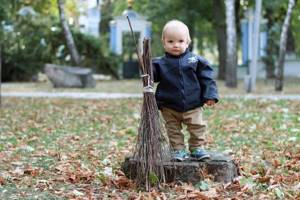
We talk about the “garbage chain”: we throw garbage into a trash can, a janitor removes it from there and takes it to the trash heap, then a special machine picks up the garbage and takes it to a landfill, where some of the garbage is sent for recycling, and the rest is burned.
Be sure to study what exactly can be called garbage, how to properly remove it, and why garbage is dangerous for nature.
We secure the material by lightly cleaning the garden area (take a rake or broom) and our children's room.
Tillage
Autumn soil work is carried out in the following sequence:
- after the leaves fall, they dig up the tree trunk circles, turning over the layer of soil, and then level the surface with a rake;
- after that, mulch with organic matter - compost, grass, leaves, without covering the base of the trunks, otherwise the root collar may support.
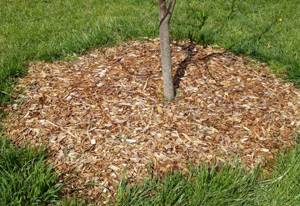
It is recommended to combine digging and mulching with fertilizing. Acidic soils are additionally limed with chalk, dolomite flour, lime or ash.
Watering in the fall is usually not necessary. Garden plants only need moisture in very dry weather. In any case, water the soil abundantly before the onset of frost to increase its heat capacity and protect the roots from temperature changes.




